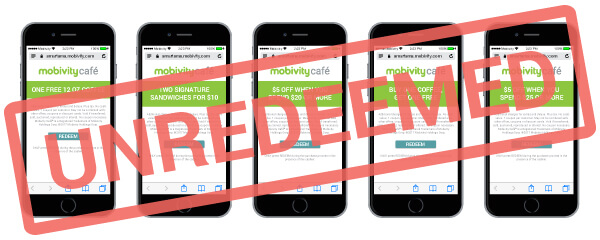Making the Most of Inactive Subscribers
You, and many other business owners know that text messaging is a great way to increase frequency and engage your customers. You’ve checked off all the boxes for the makings of a successful text club, including offering a great opt-in special to entice your customers into joining. Your text club has built a large following – but then engagement starts to dwindle, and people aren’t redeeming or responding to offers as often. You notice that there are a group of subscribers that are inactive in your following. Many marketers believe their inactive text club subscribers, those who haven’t actively engaged with their brand in months, have little or no value. If you’re among that group, you may be surprised to learn that these customers have more value than you think.
Your inactive subscribers may not have used the coupon you sent them for that 10% off special, but that doesn’t mean they’re not viewing the messages you send. Even when left unredeemed, the communication still makes a billboard-like impression on your subscribers from the screen in the palm of their hand – each offer or message they see helps cement you in their mind as a brand they interact with. Some marketers become discouraged when they see inactivity among their subscribers and, without pause, their reaction is to simply remove these phone numbers from the list in an attempt to improve redemption rate percentages amongst their audiences.

Don’t Cut Yourself Out of the Loop
Not so fast! Removing inactive subscribers is not advisable. With the importance of customer data increasing, why would you delete crucial information that could link you to customer demographics and purchase information? A phone number is a simple data point that opens the door to better targeting and therefore a more meaningful database of customer information.
If your inactive text club member is ever ready to unsubscribe, they will. It only takes a few seconds to opt-out, so when they no longer want to hear from you, they’ll make the first move. Chances are, your list of inactive subscribers is a potential goldmine of profits when sent the right offer, so now is the time to shake things up and figure out what causes these customers to react in the way that you want.
Reengage Your Customers
Instead of purging your database of contacts that haven’t taken action recently, decide how best to reengage your audience. Building a strategy is essential to take advantage of these dormant subscribers, otherwise you may end up continuing to rack up a history of unsuccessful offers that show these customers that you don’t know all that much about them.
Begin by defining who you want to mark as inactive. This could be anyone who has not opened, clicked, or acted upon a message or offer in the past 12 months. However, the definition of ‘inactive’ may vary between companies, as messaging frequency norms will vary.
Next, attempt to entice these subscribers to become active again. Don’t send them similar messages over and over. They have proven that irrelevant content doesn’t provide value for them, and could be the culprit for the inactivity you are seeing. Instead, target these customers with compelling, valuable, and personalized messages based on purchases they have made in the past and your interactions with them.
For example, if your subscribers have never redeemed an offer for a burger, they are likely not a fan. Instead, try tempting their sweet tooth with a cookie deal. Send them a series of reengagement texts including in-location promotions or specials. Be sure to include a specific call-to-action, and remember to give them plenty of options, as it may take more than one great offer to win them back!
If you’re worried that targeting your inactive subscribers with even more messages will annoy them, remember customers have the option to opt-out of communications anytime. They’ll tell you if they don’t want your messages, and even if they never act, they’re continually getting exposure to your brand. Make the most of every subscriber by leveraging your connection to them and the consumer insights they provide.

